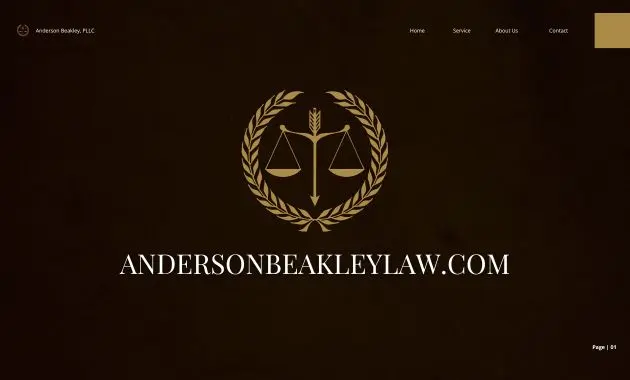Fraud and embezzlement law delves into the complex world of financial crimes, encompassing a wide range of illegal activities aimed at deceiving and defrauding individuals and organizations. From elaborate Ponzi schemes to subtle phishing scams, these crimes can have devastating consequences, leading to financial ruin and reputational damage. Understanding the nuances of fraud and embezzlement law is crucial for both individuals and businesses to protect themselves from falling victim to these schemes and to navigate the legal complexities that arise when such crimes occur.
This comprehensive exploration will examine the definitions and distinctions between fraud and embezzlement, delve into the legal framework governing these crimes, and analyze various types of fraud and embezzlement schemes. We will explore the investigative process, including best practices for gathering evidence and prosecuting offenders. Additionally, we will discuss preventive measures that individuals and organizations can implement to mitigate fraud risk and the civil remedies available to victims. By examining real-world case studies and emerging trends, this analysis will provide a comprehensive understanding of the challenges and complexities associated with fraud and embezzlement in the modern world.
Legal Framework and Statutes

Fraud and embezzlement are serious crimes that can have significant consequences for individuals and businesses. The legal framework governing these offenses is complex and multifaceted, encompassing both federal and state laws.
Also Read
Federal Laws
Federal laws address fraud and embezzlement in various contexts, including mail and wire fraud, bank fraud, securities fraud, and healthcare fraud. These laws are designed to protect the integrity of financial institutions, the stock market, and other critical sectors of the economy.
- Mail Fraud (18 U.S. Code § 1341): This statute prohibits the use of the U.S. Postal Service to execute a scheme to defraud. To establish a violation, the government must prove that the defendant knowingly devised a scheme to defraud, that the scheme involved the use of the mail, and that the defendant acted with the intent to defraud.
- Wire Fraud (18 U.S. Code § 1343): Similar to mail fraud, wire fraud prohibits the use of interstate or international wire communications to carry out a scheme to defraud. The elements of the offense are largely the same as mail fraud, with the exception that the use of wire communications is required.
- Bank Fraud (18 U.S. Code § 1344): This statute criminalizes fraudulent activities involving financial institutions, including banks, credit unions, and savings associations. Examples of bank fraud include obtaining loans through false pretenses, using stolen credit cards to withdraw funds, and embezzling funds from a bank.
- Securities Fraud (15 U.S. Code § 78j(b)): Securities fraud encompasses a wide range of deceptive practices related to the purchase and sale of securities. This includes insider trading, making false statements about a company’s financial condition, and manipulating stock prices.
- Healthcare Fraud (18 U.S. Code § 1347): This law prohibits fraudulent activities related to healthcare programs, such as Medicare and Medicaid. Examples of healthcare fraud include submitting false claims for medical services, billing for services that were not provided, and engaging in kickback schemes.
State Laws, Fraud and embezzlement law
State laws governing fraud and embezzlement vary in their specific provisions, but generally criminalize similar conduct to federal law. State laws often address common forms of fraud, such as:
- Theft by Deception: This offense involves obtaining property by making false representations or concealing material facts.
- Embezzlement: Embezzlement occurs when a person entrusted with property, such as money or assets, fraudulently appropriates it for their own use.
- Forgery: Forgery involves creating or altering a document with the intent to defraud.
- Identity Theft: This crime involves stealing another person’s identity information, such as their Social Security number or credit card information, and using it for fraudulent purposes.
Penalties for Fraud and Embezzlement
Penalties for fraud and embezzlement offenses vary depending on the specific crime, the amount of money involved, and the defendant’s criminal history. Penalties can include:
- Fines: Fines can range from a few thousand dollars to millions of dollars, depending on the severity of the offense.
- Imprisonment: Prison sentences can range from a few months to decades, depending on the nature of the crime and the defendant’s criminal history.
- Restitution: Courts may order defendants to repay the victims of their crimes.
- Probation: Defendants may be placed on probation, which typically involves conditions such as community service, drug testing, and regular meetings with a probation officer.
Legal Defenses in Fraud and Embezzlement Cases
There are several legal defenses that may be raised in fraud and embezzlement cases. These defenses include:
- Lack of Intent: The defendant may argue that they did not intend to defraud or deceive anyone. This defense is often difficult to prove, as intent can be inferred from the defendant’s actions.
- Mistake of Fact: The defendant may argue that they made an honest mistake about the facts of the situation. For example, a defendant might argue that they believed they were entitled to the money they took.
- Duress: The defendant may argue that they were forced to commit the crime due to threats or coercion.
- Entrapment: The defendant may argue that they were induced by law enforcement to commit the crime.
Investigating and Prosecuting Fraud and Embezzlement

Investigating and prosecuting fraud and embezzlement cases requires a comprehensive and systematic approach, involving meticulous evidence gathering, thorough analysis, and skillful legal strategies. Law enforcement agencies employ a multi-faceted process to uncover the truth and bring perpetrators to justice.
Investigating Fraud and Embezzlement Cases
Investigating fraud and embezzlement cases is a complex process that requires careful planning and execution. Law enforcement agencies typically follow a structured approach, involving several key steps.
- Initial Complaint and Reporting: The investigation begins with a formal complaint or report filed by the victim or a concerned party. Law enforcement agencies thoroughly review the complaint, gathering initial information about the alleged crime, the potential suspects, and the nature of the fraud or embezzlement.
- Preliminary Investigation: The initial investigation involves gathering preliminary evidence, such as financial records, documents, and witness statements. This stage helps law enforcement agencies determine the scope of the alleged crime, identify potential suspects, and assess the feasibility of pursuing a criminal investigation.
- Gathering Evidence: This stage involves collecting and analyzing evidence to support the allegations. This may involve obtaining search warrants, conducting interviews, and reviewing financial records.
- Forensic Audits: Forensic audits are crucial in fraud and embezzlement investigations, as they provide detailed analysis of financial records, identifying discrepancies, patterns of misconduct, and potential fraudulent activities.
- Witness Interviews: Interviewing witnesses is essential to gather firsthand accounts of events, corroborate evidence, and identify potential suspects. Law enforcement agencies use specialized interview techniques to obtain accurate and reliable information.
- Building a Case: Once sufficient evidence has been gathered, law enforcement agencies build a strong case against the alleged perpetrator. This involves organizing the evidence, preparing reports, and consulting with prosecutors.
Best Practices for Gathering Evidence
Effective evidence gathering is crucial for successful fraud and embezzlement investigations. Law enforcement agencies employ various best practices to ensure the integrity and reliability of evidence:
- Chain of Custody: Maintaining a meticulous chain of custody is paramount to ensure the evidence’s integrity. This involves documenting the handling, storage, and transfer of evidence, ensuring it remains untouched and unaltered.
- Documenting Evidence: Thorough documentation of all evidence is essential. This includes photographs, videos, audio recordings, and detailed descriptions of the evidence and its location.
- Preserving Evidence: Evidence must be preserved in its original state to avoid contamination or tampering. This involves storing evidence securely and using appropriate preservation techniques.
- Digital Evidence: In the digital age, digital evidence plays a crucial role in fraud and embezzlement investigations. Law enforcement agencies utilize specialized tools and techniques to recover, analyze, and preserve digital evidence.
Best Practices for Interviewing Witnesses
Effective witness interviews are essential for obtaining accurate and reliable information. Law enforcement agencies employ several best practices:
- Preparation: Before conducting an interview, law enforcement officers must thoroughly prepare by researching the case, reviewing available evidence, and formulating specific questions.
- Building Rapport: Establishing rapport with the witness is crucial to create a comfortable and trusting environment, encouraging them to provide honest and complete information.
- Open-Ended Questions: Using open-ended questions encourages the witness to provide detailed accounts of their observations and experiences, rather than simply answering yes or no.
- Active Listening: Active listening involves paying close attention to the witness’s statements, observing their body language, and asking clarifying questions to ensure understanding.
- Documentation: Thorough documentation of the interview is essential. This includes recording the witness’s statements, their demeanor, and any inconsistencies or contradictions.
Best Practices for Conducting Forensic Audits
Forensic audits play a critical role in uncovering fraudulent activities and embezzlement schemes. Best practices for conducting forensic audits include:
- Scope and Objectives: Defining the scope and objectives of the forensic audit is crucial. This involves identifying the specific financial records, transactions, and areas of concern to be examined.
- Data Collection and Analysis: Forensic auditors collect relevant financial data, such as bank statements, invoices, receipts, and payroll records. They then analyze the data to identify discrepancies, patterns of misconduct, and potential fraudulent activities.
- Data Visualization: Forensic auditors use data visualization techniques to present complex financial information in a clear and understandable format. This helps identify trends, patterns, and anomalies that might otherwise be overlooked.
- Expert Testimony: Forensic auditors often provide expert testimony in court, explaining their findings and the implications of their analysis.
Challenges in Prosecuting Fraud and Embezzlement Cases
Prosecuting fraud and embezzlement cases presents several challenges:
- Complex Financial Transactions: Unraveling complex financial transactions can be time-consuming and challenging, requiring expertise in accounting, finance, and forensic auditing.
- Lack of Physical Evidence: Fraud and embezzlement cases often involve intangible assets and digital evidence, making it difficult to gather physical evidence.
- Witness Cooperation: Witnesses may be reluctant to cooperate, fearing retaliation or involvement in the crime.
- Burden of Proof: The prosecution must prove the defendant’s guilt beyond a reasonable doubt, which can be a high burden in cases involving complex financial transactions.
Strategies for Prosecuting Fraud and Embezzlement Cases
Prosecutors employ various strategies to overcome the challenges in prosecuting fraud and embezzlement cases:
- Strong Investigative Teams: Building strong investigative teams with expertise in finance, accounting, and forensic auditing is essential to thoroughly investigate and gather evidence.
- Collaboration with Experts: Prosecutors collaborate with experts in various fields, such as forensic accountants, computer forensics specialists, and financial analysts, to analyze evidence and present a compelling case.
- Witness Protection Programs: Protecting witnesses from retaliation is crucial, especially in cases involving organized crime or powerful individuals.
- Creative Legal Strategies: Prosecutors employ creative legal strategies, such as using asset forfeiture laws, to recover stolen assets and deter future crimes.
Preventing Fraud and Embezzlement: Fraud And Embezzlement Law
Preventing fraud and embezzlement requires a proactive approach that combines strong internal controls, robust security measures, and a culture of ethical awareness. Organizations and individuals alike can implement strategies to minimize their risk of falling victim to these financial crimes.
Practical Steps for Prevention
A combination of practical steps can significantly reduce the likelihood of fraud and embezzlement.
- Implement Strong Internal Controls: Internal controls are the backbone of fraud prevention. They establish a framework of policies, procedures, and processes designed to safeguard assets, ensure accuracy of financial records, and promote operational efficiency. Effective internal controls include:
- Segregation of Duties: Ensuring that no single person has complete control over a transaction or process. This principle helps prevent conflicts of interest and reduces opportunities for fraud. For example, separating the tasks of authorizing payments, recording transactions, and reconciling bank statements.
- Regular Audits and Reviews: Conducting periodic internal audits to assess the effectiveness of existing controls and identify any vulnerabilities. This helps ensure that controls are functioning as intended and that any gaps are addressed promptly.
- Automated Controls: Utilizing technology to automate certain tasks, such as data entry or reconciliation, can reduce human error and enhance efficiency. For instance, using software for automated reconciliation of bank statements can significantly reduce the risk of errors and potential fraud.
- Establish Clear Policies and Procedures: Having written policies and procedures outlining acceptable conduct, ethical standards, and guidelines for handling financial transactions is essential. These policies should be communicated effectively to all employees and enforced consistently.
- Conduct Background Checks: Performing thorough background checks on potential employees, particularly those handling sensitive financial information, can help identify individuals with a history of fraudulent behavior.
- Foster a Culture of Transparency and Accountability: Creating an environment where employees feel comfortable reporting suspicious activity or potential wrongdoing is crucial. This can be achieved by establishing clear whistleblower policies, providing anonymous reporting channels, and encouraging open communication.
Effective Internal Controls and Security Measures
- Access Control: Limiting access to sensitive data and systems to authorized personnel only. This can be achieved through the use of strong passwords, multi-factor authentication, and role-based access controls.
- Data Encryption: Protecting sensitive data by encrypting it during storage and transmission. This ensures that even if data is intercepted, it cannot be accessed without the appropriate decryption key.
- Regular Security Updates: Keeping software and systems up to date with the latest security patches and updates is essential to mitigate vulnerabilities and protect against cyberattacks.
- Monitoring and Detection Systems: Implementing fraud detection systems that monitor transactions for unusual patterns and anomalies. This can help identify potential fraudulent activity in real-time.
- Physical Security Measures: Protecting physical assets, such as cash or sensitive documents, through measures like locked storage, security cameras, and access control systems.
The Role of Ethical Training and Awareness Programs
Ethical training programs are vital for mitigating fraud risk. They play a crucial role in shaping employee behavior and fostering a culture of integrity.
- Ethical Awareness: Training programs should raise employee awareness about ethical principles, potential fraud risks, and the consequences of unethical behavior. This can be achieved through interactive workshops, case studies, and real-life scenarios.
- Code of Conduct: Developing a clear and comprehensive code of conduct that Artikels ethical expectations and standards of behavior for all employees. This code should be communicated effectively and reinforced through regular training.
- Reporting Mechanisms: Establishing clear and accessible reporting mechanisms for employees to raise concerns about potential fraud or unethical behavior. This could include anonymous hotlines, online reporting platforms, or designated individuals within the organization.
- Regular Refreshers: Conducting periodic refresher training to reinforce ethical principles and update employees on emerging fraud trends. This ensures that employees remain informed and aware of the latest tactics used by fraudsters.
The fight against fraud and embezzlement is an ongoing battle, requiring a multi-faceted approach that encompasses legal enforcement, preventative measures, and public awareness. By understanding the intricacies of these crimes, individuals and organizations can equip themselves with the knowledge and tools necessary to protect themselves and navigate the complexities of the legal landscape. As technology continues to evolve and new schemes emerge, it is crucial to stay informed and adapt to the changing dynamics of fraud and embezzlement. By fostering collaboration between law enforcement, businesses, and the public, we can create a more secure environment and effectively combat these financial crimes.
Fraud and embezzlement law focuses on the illegal misappropriation of assets, often leading to financial ruin for individuals and businesses. When such crimes result in a company’s inability to meet its financial obligations, it may be forced to seek protection under Bankruptcy and insolvency law. This area of law provides a framework for restructuring debts or liquidating assets to satisfy creditors.
Understanding the intricacies of both fraud and embezzlement law and bankruptcy law is crucial for both victims and perpetrators, as it helps to navigate the complex legal landscape surrounding financial distress.



